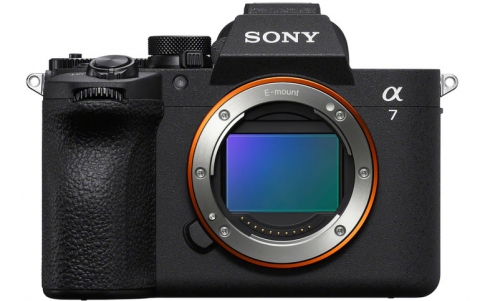
Matsushita announces USB 2.0 interface LSI for optical disk drives
Matsushita Electric Industrial Co. announced today the development of an advanced USB 2.0 interface LSI (MN865400) that integrates several circuits into one chip for optical disk drives. A sample shipment of the new LSI will begin in November 2001.
The new LSI enables faster and smoother conversion by integrating the following circuits: circuitry for the USB 2.0 physical layer circuit; a bridge circuit between the USB 2.0 and ATAPI data buses; a transaction engine circuit, and a DMA transfer circuit into a single chip. This has been achieved through a CMOS 0.25 µm process, a unique high-speed analog/digital on-chip technology that has recently been developed by Matsushita. The physical layer circuit enables the USB 2.0 to transfer data at 480 Mbps, which realizes a direct connection to the host PC. Until now, data conversion from optical disk drives to the USB 2.0 could only be achieved through the ATAPI Bridge Method, which requires a special microprocessor or sequencer. This newly developed LSI supports signaling and timing for a variety of ATAPI transfer modes, such as Ultra DMA mode 0-4, PIO (programmed input/output) mode 0-4, and Multiword DMA. The DMA method does not require additional parts, and it an also accommodate optical disk drive products and other PC peripherals such as digital cameras, scanners, and printers. It can transfer data at a maximum rate of 60 MB/s..."
LSI Number MN865400
Functions USB 2.0 physical layer and link layer
Data transaction engine built in
ATAPI interface supporting Ultra-DMA mode 4
DMA transfer mode at 60 MB/s data transfer rate
Data bit rate 480 Mbps (USB 2.0), 12Mbps (USB 1.1)
Process CMOS 0.25 µm 4-layer metal
Frequency 60 MHz
Voltage 3.3 V (IO) 2.5 V (Internal)
Package 100 pin QFP 14 x 14 mm
Logo [USB 2.0 High-Speed] logo by the USB-IF
The new LSI enables faster and smoother conversion by integrating the following circuits: circuitry for the USB 2.0 physical layer circuit; a bridge circuit between the USB 2.0 and ATAPI data buses; a transaction engine circuit, and a DMA transfer circuit into a single chip. This has been achieved through a CMOS 0.25 µm process, a unique high-speed analog/digital on-chip technology that has recently been developed by Matsushita. The physical layer circuit enables the USB 2.0 to transfer data at 480 Mbps, which realizes a direct connection to the host PC. Until now, data conversion from optical disk drives to the USB 2.0 could only be achieved through the ATAPI Bridge Method, which requires a special microprocessor or sequencer. This newly developed LSI supports signaling and timing for a variety of ATAPI transfer modes, such as Ultra DMA mode 0-4, PIO (programmed input/output) mode 0-4, and Multiword DMA. The DMA method does not require additional parts, and it an also accommodate optical disk drive products and other PC peripherals such as digital cameras, scanners, and printers. It can transfer data at a maximum rate of 60 MB/s..."
LSI Number MN865400
Functions USB 2.0 physical layer and link layer
Data transaction engine built in
ATAPI interface supporting Ultra-DMA mode 4
DMA transfer mode at 60 MB/s data transfer rate
Data bit rate 480 Mbps (USB 2.0), 12Mbps (USB 1.1)
Process CMOS 0.25 µm 4-layer metal
Frequency 60 MHz
Voltage 3.3 V (IO) 2.5 V (Internal)
Package 100 pin QFP 14 x 14 mm
Logo [USB 2.0 High-Speed] logo by the USB-IF



















